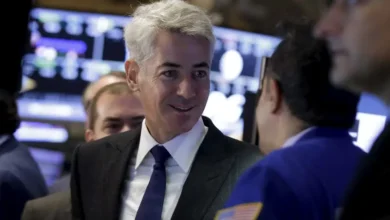Euro edges higher, but focus still on Ukraine

The euro edged higher against the dollar on Wednesday with investors bracing for further developments in the Ukrainian crisis after Western countries announced sanctions against Russia for ordering troops into separatist regions
Satellite imagery over the past 24 hours shows several new troop and equipment deployments in western Russia and more than 100 vehicles at a small airfield in southern Belarus, which borders Ukraine, according to U.S. firm Maxar
“The short-term movement in all currency pairs is mainly driven by the escalation levels,” Moritz Paysen, forex and rates adviser at Berenberg, said
“Surprisingly, the euro remained stable against the USD despite the risk-off movement, but we assume that this will not be the case for much longer and that the euro will then lose ground accordingly,” he added
The single currency staged a slight rebound on Tuesday when it approached its lowest since Feb. 3, the day when the European Central Bank’s hawkish shift boosted its exchange rate
But some analysts expect the Ukrainian crisis to affect ECB’s decisions at its policy meeting next month
Further escalation “seems increasingly likely and can be expected to motivate a cautious message by the ECB at the 10 March meeting”, SEB Group analysts said
The euro was up 0.1% against the dollar at $1.1340 after hitting its lowest on Tuesday since Feb. 14 at $1.1286
But, according to Commerzbank analysts, “monetary policy is taking a back seat, and risk aversion is in the driving seat”
“If the situation in Ukraine escalates further, EUR-USD could therefore easily make another attempt towards 1.12,” they said in a research note
The Russian currency fell 0.9% at 79.38 against the dollar
The dollar index, which measures the greenback against six peers, fell 0.1% to 96.949
The New Zealand dollar jumped 0.8% after the Reserve Bank of New Zealand raised interest rates and said more tightening could be necessary.
Safe-haven currencies took a breather after rallying on concerns about an escalation of the Ukrainian crisis, but analysts said they remained in demand
The Swiss Franc was down 0.1% against the euro at 1.0435, after hitting its highest since Feb. 22 at 1.0335 the previous day. In January it hit its highest since June 2015 at 1.0298
The yen fell 0.5% to 130.47 against the single currency after hitting its highest since Feb. 3 at 129.34 on Tuesday
The oil price-sensitive Norwegian crown was slightly higher versus the single currency, hitting a fresh high since Feb. 15 at 10.0475
Oil prices steadied as it became clear the first wave of U.S. and European sanctions on Russia for sending troops into eastern Ukraine would not disrupt oil supplies.
The Swedish crown rose 0.1% against the euro after Riksbank’s Deputy Governor Martin Floden said on Monday the central bank was unlikely to raise rates in the coming year or so





